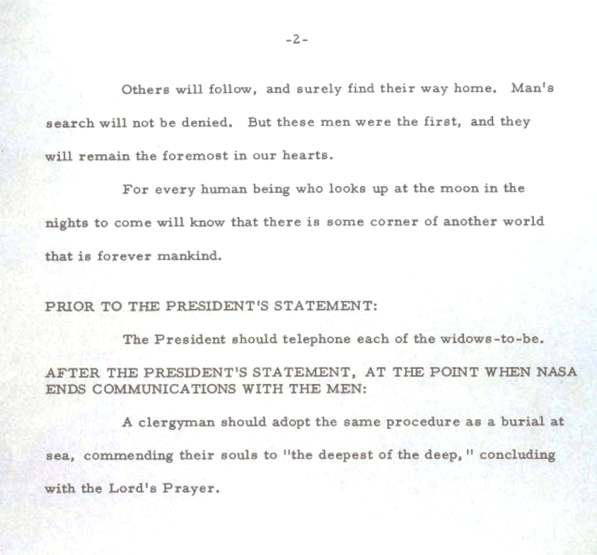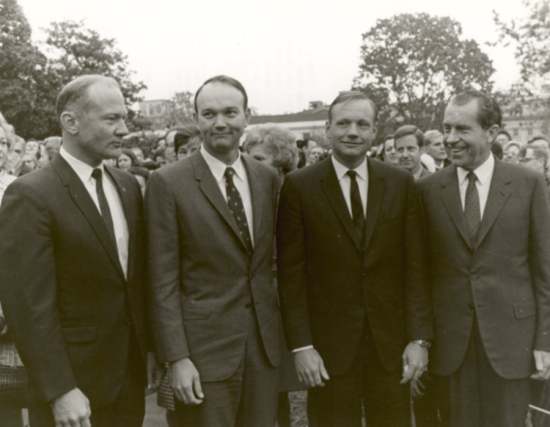These were among the first words uttered by Neil Armstrong after the Apollo 11 mission landed on the moon in 1969. He actually said: “Houston, Tranquility Base here. The Eagle has landed.”
The recent death of Neil Armstrong brought to mind memories of that extra-ordinary year when humans first landed on the moon. It was a remarkable technological achievement and a testament to American ingenuity and determination. Just about everyone around the world followed the event closely and with bated breath. With all the news surrounding Armstrong’s death, I became aware for the first time about some facts which I suspect most people would not be familiar with.
When the shuttle Challenger exploded, it was unexpected since manned space travel had been taking place quite uneventfully for over 20 years. Peggy Noonan, the extraordinarily skilled wordsmith, wrote the speech that Ronald Reagan gave the nation after the Challenger tragedy. It is ranked by 137 scholars of American political speeches as being one of the ten best political speeches in US history! Noonan drew from the poet John Magee and Reagan ended his address with the following reference to the deceased astronauts:
“We shall never forget them nor the last time we saw them, as they prepared for their mission, waved good-bye and slipped the surly bonds of Earth to touch the face of God.”
What is less known is that when Apollo 11 made its historic journey to the moon, HR Haldeman – Nixon’s Chief of Staff – asked William Safire, one of Nixon’s speech writers, to draft an address that Nixon would give the nation in the event Armstrong and Buzz Aldrin were stranded on the moon and could not return to earth. It is difficult to imagine today that a “protocol” had been developed as to what should happen if the tragedy should befall the Armstrong and Buzz Aldrin in the course of the mission. The risks involved were stupendous and Armstrong himself Armstrong rated their chances of success as no better than 50/50!
The lunar module from Apollo 11 landed on the moon on July 20th, 1969. Safire provided Haldeman a draft of what Nixon should say in the event the astronauts were stranded on July 18th – two days prior to the landing on the moon! Not only had a speech been prepared but the White House – presumably in conjunction with NASA – had planned the precise sequence of events if tragedy did strike.
Shown below are images of the actual two page memo that Safire sent Haldeman outlining the address that Nixon would give to the nation.
The second page:
Armstrong later said, “I was elated, ecstatic and extremely surprised that we were successful.”
The astronauts were fully prepared for the possibility that things could go tragically wrong – and so was Nixon. The riskiest parts of the mission were the landing of the Lunar Module (Eagle) on the lunar surface, and it’s subsequent lift-off and re-docking with Apollo’s Command Module (Columbia) piloted by Michael Collins in orbit 60 miles above the Moon. And on more than one occasion the mission came close to ending in tragedy
Failure in the descent could have sent Armstrong and Aldrin crashing into the Moon …… and they came close to things going very wrong. When the Eagle, separated from the orbiter, the cabin wasn’t fully depressurized, resulting in a burst of gas equivalent to popping a champagne cork. It threw the module’s landing four miles off-target. Neil Armstrong who piloted the lunar module nearly ran out of fuel landing the Eagle.
“At 5,000 feet Armstrong took manual control of the Eagle as planned, but noticed that the craft’s automatic navigation system was carrying them towards a boulder strewn crater about the size of a football pitch. A landing there could have fatally damaged the Eagle, so Armstrong was forced to manually over-ride the system and search for a clear landing site. This consumed more fuel than their simulations had bargained for and they were running very low. Also, the Eagle’s thrusters were kicking up sheets of dust like a layer of ground fog which obscured Armstrong’s vision.”
When the lunar module landed there was fuel left for only an additional 16 seconds of flight!
“Failure in the ascent could have left them stranded on the surface without hope of rescue and, at best, a couple of days’ oxygen left. Collins, orbiting 60 miles above them, would have been powerless to help and would have been ordered to return to Earth as the sole survivor of the Apollo 11 mission………..When the astronauts were awoken by Houston to prepare for the return flight, Aldrin while moving around in the cabin accidentally broke the circuit breaker that would arm the main engine for lift off. There was concern that this would stop the engine firing, leaving them stranded on the Moon. Luckily a felt-tip pen was enough to activate the switch.”
The Eagle docked with Columbia and they returned to the earth to widespread acclaim and celebration.

Nixon welcomes the astronauts, confined to the Mobile Quarantine Facility (MQF), on board the USS Hornet after Apollo 11 splashed down
But if something had gone wrong, this was the planned sequence of what would then happen:
“President Nixon would have broken the news to the widows-to-be – Janet Armstrong and Joan Aldrin, and then have read the statement, prepared by Safire, to the world.
NASA would probably have stayed in contact with Armstrong and Aldrin, and perhaps given them the opportunity to say some final goodbyes. When the time would have come for NASA to finally end communication with the stranded astronauts, a clergyman would have taken over the broadcast and carried out the service for a burial at sea, commending their souls to the deep and ending with the Lord’s Prayer.
What impact this would have had on subsequent missions to the Moon is hard to say, but would probably have led to a redoubling of NASA’s efforts to land men on the lunar surface and bring them home safely; public sentiment may even have led to a mission to bring the bodies home.
Luckily this scenario never played out and the astronauts went on to live long lives – if not always happy ones. In Armstrong’s case, he was deeply uneasy about the fame he acquired as the first man on the moon and avoided publicity. His wife Janet, who divorced him in 1994, said:
“Everyone gives Neil the greatest credit for not trying to take advantage of his fame, not like other astronauts have done. But look what it’s done to him inside. He feels guilty that he got all the acclaim for an effort of tens of thousands of people.”
Armstrong himself said, “I don’t want to be a living memorial,” preferring to “bask in obscurity.”
RIP ….. Neil Armstrong!
Hat-tip to “Abroad in the Yard” for most of the italicized information in this posting








The experience must have humbled Neil beyond words. His spirit man virtually came to the fore, meaning he discounted on human sentiments and saw his survival and return to earth as only divine and not due to his skillfulness or intellectual ingenuity.
Many thanks to Abroad in the yard for this excellent piece to the memorial of this great man whom I have admired since childhood.